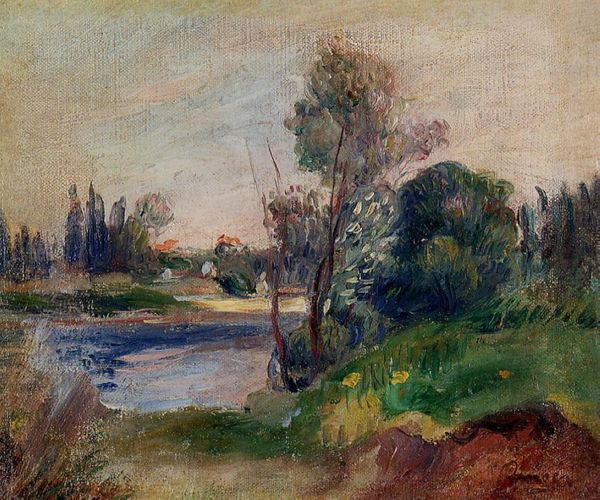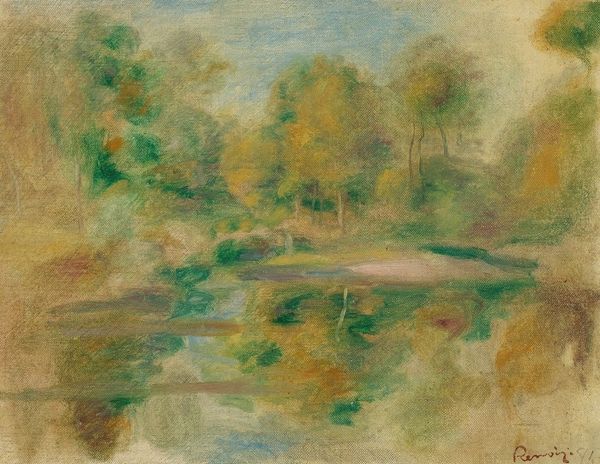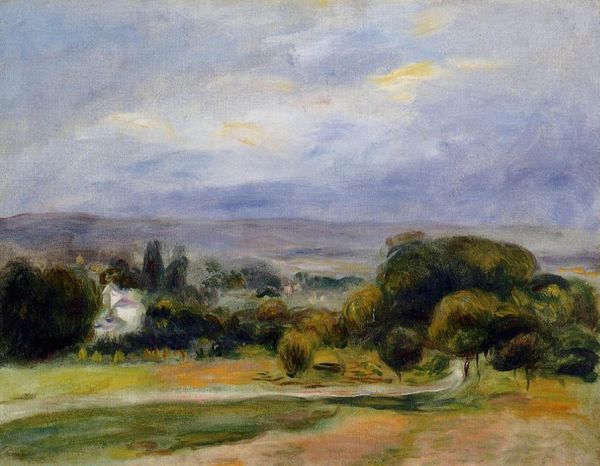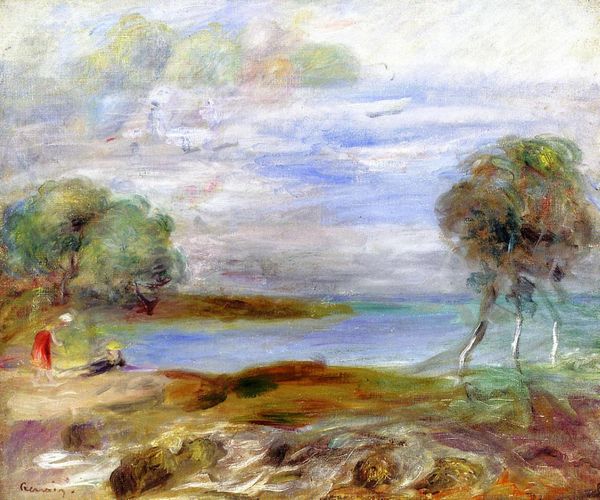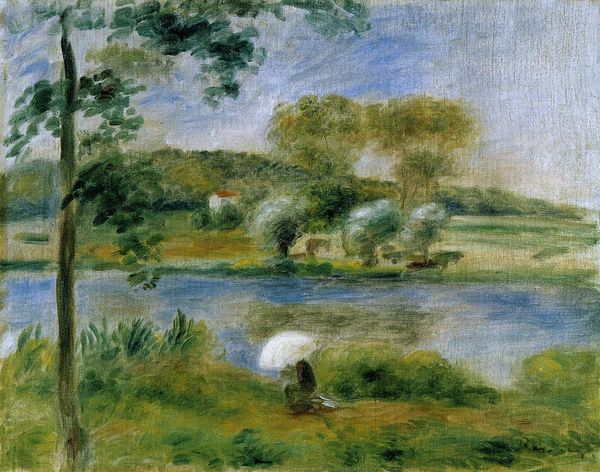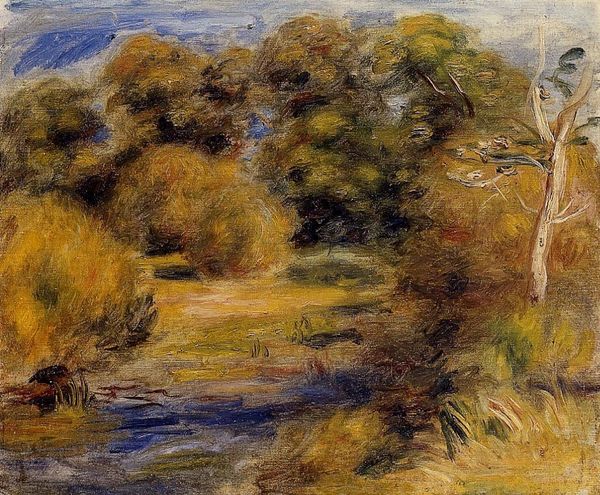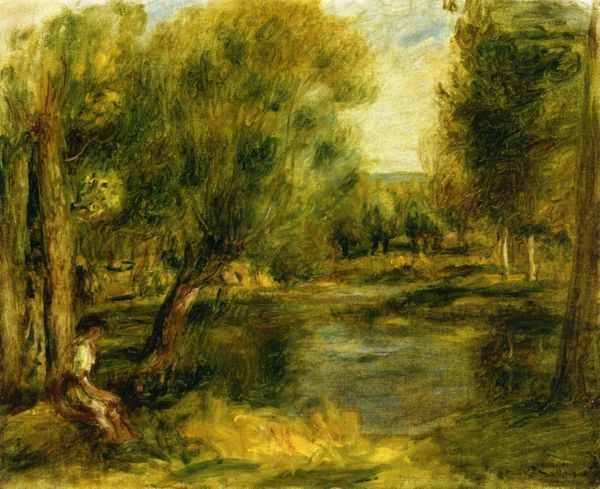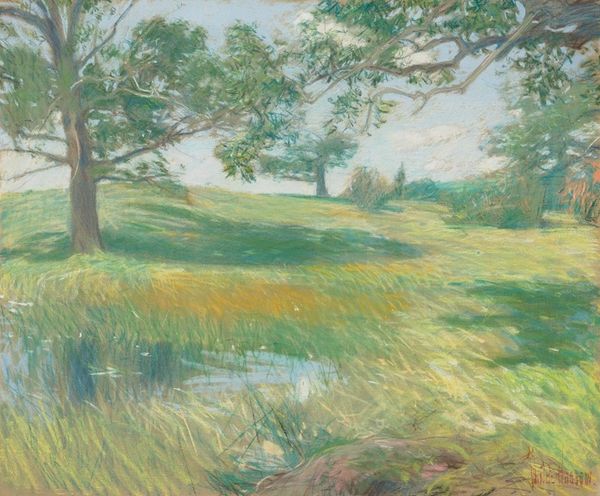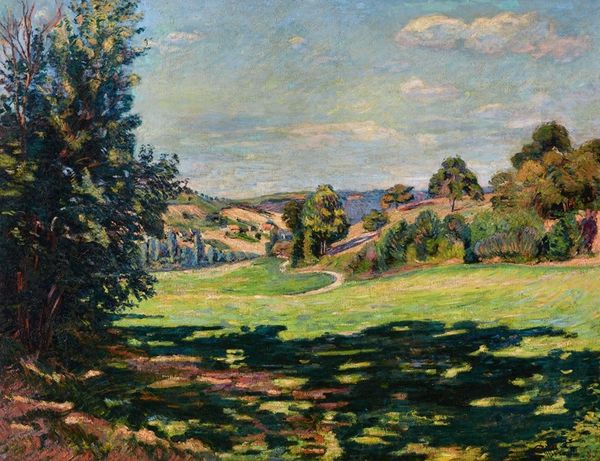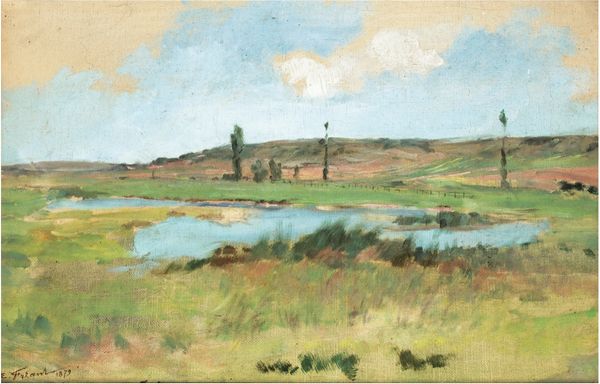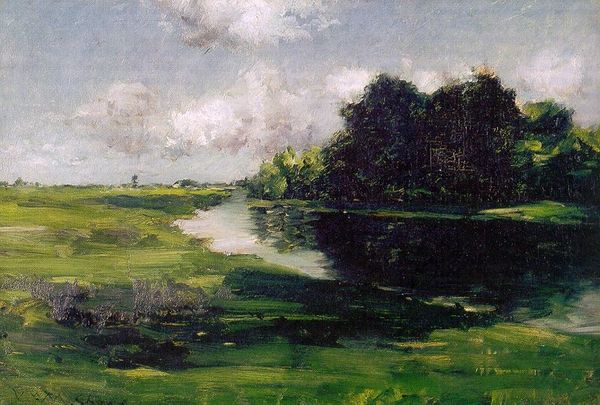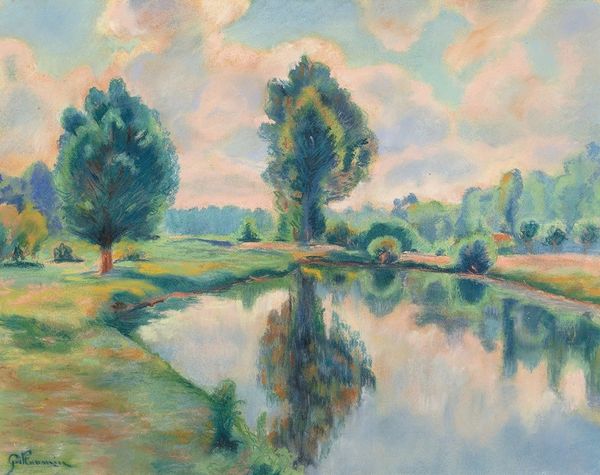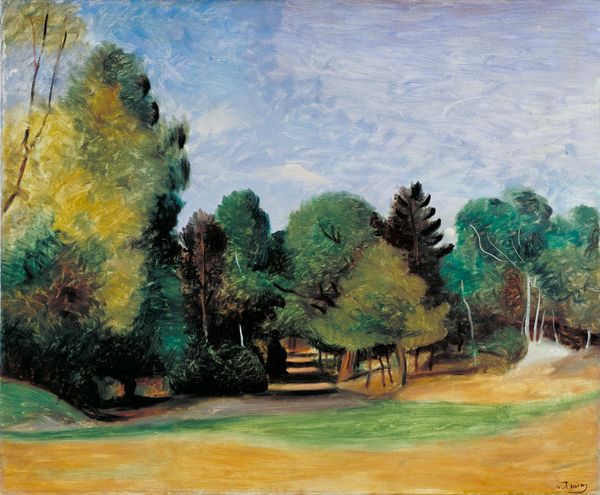
Copyright: Public domain
Editor: So, here we have Renoir’s "Landscape with Fence," painted around 1910 using oil paints. The brushstrokes are quite visible, giving the whole scene a sort of dreamlike haziness. What really strikes me is the contrast between the rough texture of the fence in the foreground and the softer, blurred landscape behind it. What do you see in this piece? Curator: It's precisely that contrast that draws me in. Let's consider the materiality here. Oil paint, worked *en plein air*, as Renoir often did, becomes a record of not only the scene, but the act of observing and transforming the world into pigment. The "rough texture" isn’t just about surface, it represents labor. The fence, seemingly humble, speaks to boundaries, ownership, and the social construction of landscape itself. Editor: I see what you mean. I hadn't really considered the fence beyond its literal representation. Are you saying the materials themselves comment on this idea of 'social construction?' Curator: Absolutely. Renoir's late style, though often critiqued, demonstrates a kind of dissolving of form into pure sensation. He uses his materials – the fluidity and opacity of oil paint – to question the solidity and fixedness of the landscape. How is this landscape made accessible? Is it shaped by the consumption-driven gaze that often accompanies landscape paintings? Editor: That’s a fascinating point! I hadn't thought about how Renoir's style itself might be a comment on our relationship with nature, about viewing and consuming land at the time, about his artistic labor. Thanks to you, it gives me a completely fresh look on "Landscape with Fence,". Curator: Exactly! I think by digging a little deeper into how and why something was created, we can start to grasp some essential details to understand the period's society and ideologies, which often intersect with art making.
Comments
No comments
Be the first to comment and join the conversation on the ultimate creative platform.
